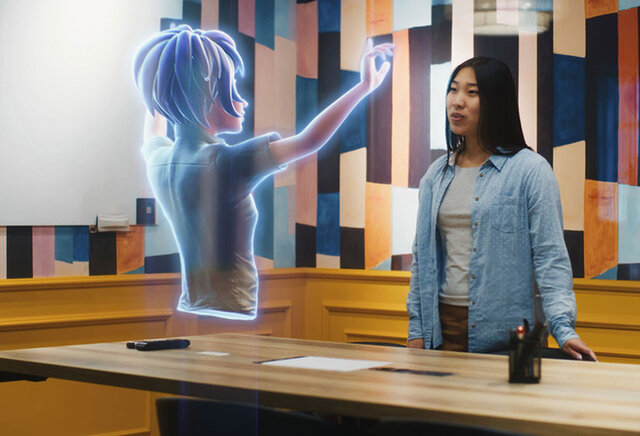artificial intelligence
Are we ready for digital humans
companions, therapists, entertainers…?
The global digital human avatar market is on track to be valued at over £156.19 billion by 2032.
What was once only the subject of science fiction novels has suddenly become a topic of everyday conversation in many different circles.
Is the world ready for digital humans? Opinions are mixed.
Find out what experts have to say about digital humans – and whether or not the world is ready for them – below.
What are digital humans?
Digital humans, put simply, are virtual beings that are, no pun intended, virtually indistinguishable from real human beings.
Digital humans are a subcategory of avatars.
An avatar is an electronic image that represents a user and can be manipulated by them. The same applies to digital humans, but they are more realistic than other types of avatars, which are typically more cartoonish or abstract in nature.
Other avatars and real humans alike can interact with digital humans. Not only do they look like real people, but thanks to artificial intelligence, they can also communicate like real humans.
Digital humans can be used in a variety of situations and scenarios, including the following:
- Customer support representatives
- Instructors (for corporate training, school and college education, etc.)
- Virtual assistants
- Characters in TV shows, movies, etc.
- Presenters in marketing and sales presentations
- Digital influencers
- Therapists
Digital humans can also serve as companions – romantic or platonic.
Not only do they look like real people, but thanks to artificial intelligence, they can also communicate like real humans.
Technologies used in digital human development
Several different technologies are used to create digital humans, but the following are the most integral to the development process:
● 3D scanning, which serves as a basis for 3D modelling
● 3D modelling, which is used to create a 3D model of a person
● Natural language processing, which is used to understand voice commands
● Natural language generation, which is used to form realistic responses
● Artificial intelligence, which is used to process data and recognise and learn from patterns

How realistic are digital humans?
The combination of all these technologies results in a highly realistic digital human. How realistic is it really, though?
One of the greatest challenges in digital human development has to do with the “uncanny valley phenomenon”.
This phenomenon was first coined by the Japanese roboticist Masahiro Mori in 1970. Mori found that robots were more appealing when they more closely resembled humans. However, he also found that people were unsettled by a robot that was so close to being human but still had something slightly “off” about it.
This issue remains a problem today when it comes to developing digital humans. There is still work to be done when it comes to making digital humans entirely indistinguishable from real humans. However, technology has come a long way over the last several years, and it will only become more sophisticated in the future.
Uncanny Valley Phenomenon
Mori found that robots were more appealing when they more closely resembled humans. However, he also found that people were unsettled by a robot that was so close to being human but still had something slightly “off” about it.
Advantages of digital humans
Digital humans – especially as they become more realistic – can provide many benefits to individuals and society as a whole. The following are some of the most noteworthy advantages they – and those who develop them – offer:
Reliability
Digital humans are quickly becoming more prevalent in a variety of industries and professions, from customer service to human resources.
One reason for their growing popularity has to do with their reliability. Think about it – a digital human will never call out sick, show up late, or have to leave work early because of an emergency.
Scalability
Hiring new employees is an important part of growing and scaling a business. It can also be time-consuming and expensive.
When organisations rely on digital humans, it’s easier for them to scale without spending time and resources recruiting, interviewing, hiring, training, etc. Entrepreneurs can skip or speed through these steps and focus on other aspects of growing their companies.
Affordability
The scalability of digital humans can also make them more affordable.
Imagine a company needs to grow its customer service department. Rather than paying salaries, benefits, etc., to hire more human customer service agents, a business could use digital humans to keep up with the increasing number of calls, emails, and messages it receives each day.
The affordability discussion also comes up frequently in entertainment circles. Rather than hiring actors to play characters, some studios have dabbled with the idea of using digital humans (this was a critical topic of the 2023 actors' strike).

When people interact with digital humans – especially as they become more and more human-like – they’re more likely to disclose their personal information.
Personalisation
Machine learning and artificial intelligence play critical roles in personalisation, including providing more personalised responses to human customers, clients, patients, etc.
The technologies used to develop digital humans lend themselves to personalised interactions and, in some cases, meaningful discussions. For example, a digital human in a therapist role can have an empathetic and understanding conversation with a frustrated client and help them come up with solutions to their problems.
Accessibility
Digital humans have the potential to help businesses make their services more accessible to a larger audience as well.
For example, it is easy for a digital human to switch between various languages and to take different cultural contexts into account. These efficient switches, in turn, allow businesses to interact with people from all over the world in their native languages and in ways that are most acceptable to them.
Disadvantages of digital humans
Digital humans also come with potential disadvantages. The following are the most frequently cited risks associated with increased reliance on digital humans:
Privacy
One of the most significant hurdles digital human developers must contend with is the issue of privacy.
When people interact with digital humans – especially as they become more and more human-like – they’re more likely to disclose their personal information.
More regulation will be required to protect those engaging with digital humans to ensure their information doesn’t fall into the wrong hands.
Ethics
There is also an ethical discussion to be had regarding digital humans. Many people are concerned about digital humans taking jobs away from real humans (in the case of entertainers, therapists, customer service reps, etc.).
Human interaction
Some are also concerned about how increased interaction with digital humans will influence the way actual humans engage with one another. Communication is a cornerstone of the human experience, and it’s unclear how an uptick in communication with digital humans will change the way people speak to each other.
Conclusion
Are we ready for digital humans? The short answer is, “We don’t know.”
What is clear, though, is that there are benefits and drawbacks to digital humans, particularly those that are so life-like that they pass or almost pass for real humans.